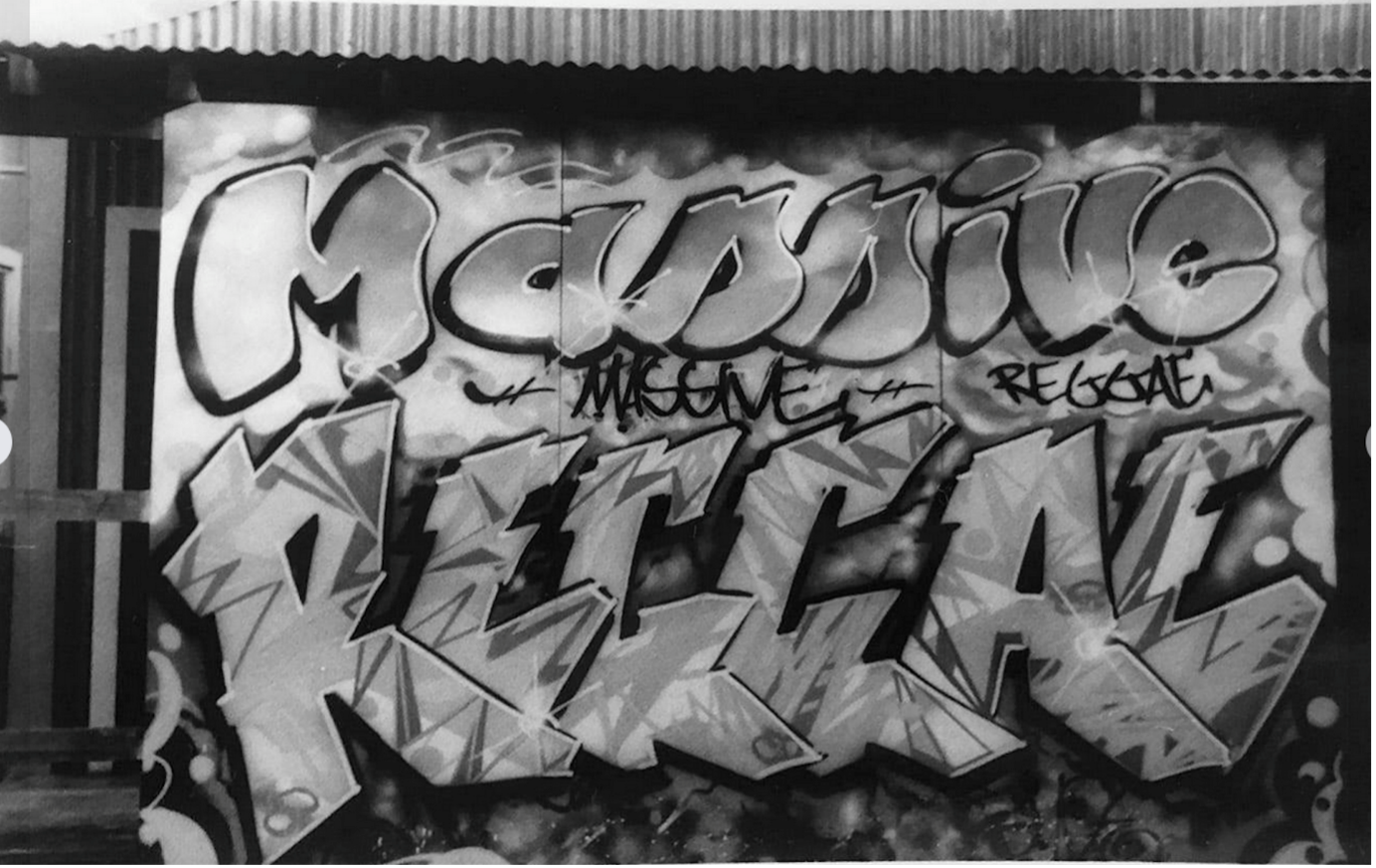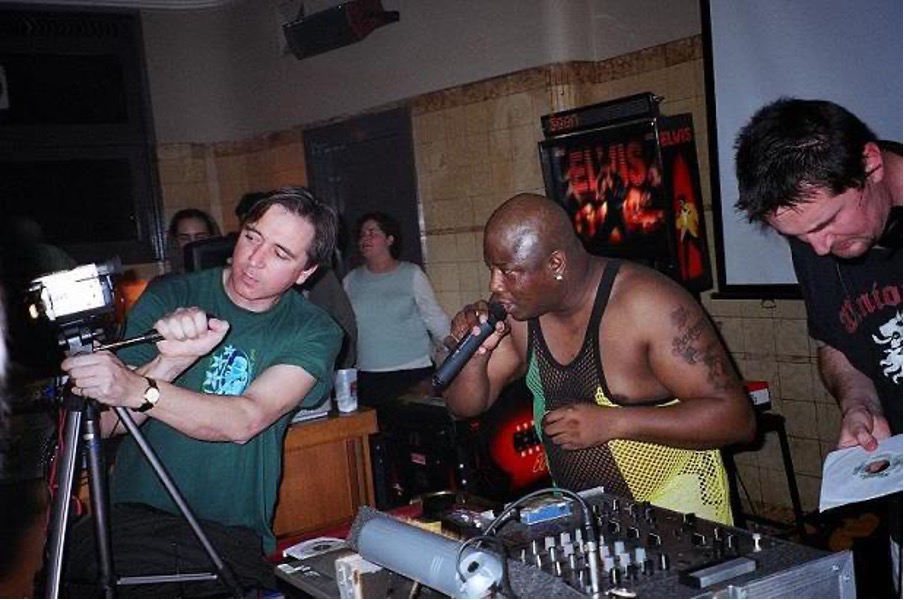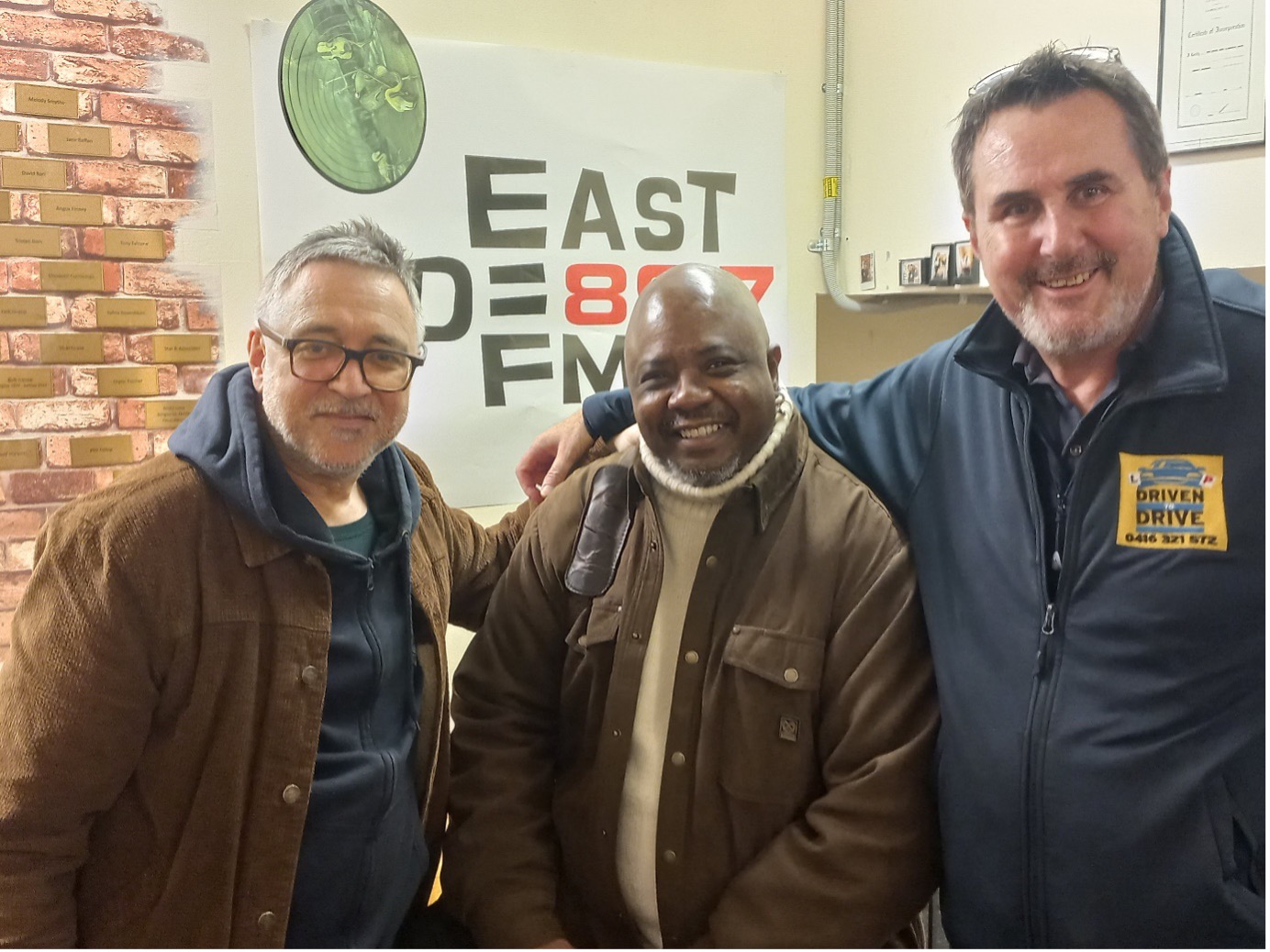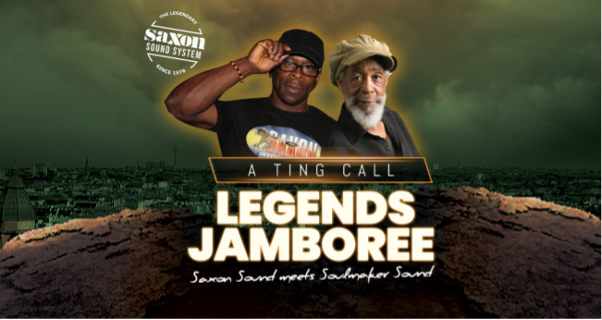Introducing Reggae Sound System History in Sydney
The recent sound system boom in Australia (see this blog post on Melbourne’s sound system scene) did not happen overnight. Rather, it was built upon the foundational work of a generation of pioneers who had to overcome geographical and cultural barriers — often questioning their own positioning in the process. In this post, SST Australia researcher Moses Iten sits down with Brent Clough, one of the pioneers of reggae in Australia, reconstructing a slice of reggae history in Sydney through his experience and tracing the early development of the city’s sound system movement.
by Moses Iten
Sydney was home to Australia’s first custom-built reggae sound system with Soulmaker built by Jamaican immigrant JJ Roberts in 1974, whose legacy lives on today. This blog post presents a slice of Sydney’s reggae sound system history of the 1980s and early 1990s from the perspective of Brent Clough a.k.a Señor Bambu, a selector inspired by the legacy of Soulmaker who has been making an instrumental contribution to reggae in Australia since the 1980s. Born in Aoteroa/New Zealand, Clough became active as a selector and radio DJ soon after arriving in 1984, hosting community radio programs dedicated to reggae while working as a producer and presenter for Australia’s ABC Radio National until recently.
In 1980s and 1990s Australia, the reggae and sound system scene “required imagination and determination to avoid anxieties about authenticity and distinctiveness” according to Clough [1]. Since then, reggae sound system culture has experienced a boom in Australia—especially in the city of Melbourne as documented on this blog in Introduction to Sound System Culture in Melbourne [2]—and this makes it especially significant to recognize the earlier struggles of the culture from the perspective of protagonists of earlier decades. Over the years, Clough has also written book chapters and articles on reggae history in Australia and the Pacific region more broadly and is currently a PhD candidate in anthropology at the University of Sydney, investigating reggae culture in Vanuatu and has written numerous book chapters and articles on reggae in Australia and the Pacific [3].
The first reggae band Clough witnessed live were a Maori band from Porirua in Wellington called Chaos, playing to mostly Maori and Pacific Island crowds:
I was really pleased to see that reggae was catching on because I’d listened to a lot of Jamaican reggae and then about the same year, I saw Bob Marley and the Wailers in Auckland. This was 1979 and just because I was persistent, I managed to get an interview with Bob Marley. So I did that for my school newspaper, which I edited and, you know, actually spent half an hour with Bob just having a nice chat [4].
Clough was a high school student at the time and witnessed the growing power of Marley’s legend. In When Bob Came, the documentary TV series broadcast in New Zealand celebrating the ongoing local significance of the reggae legend’s tour of 1979, Marley is shown very moved by a traditional Maori welcome [5]. Marley also toured Australia that year, laying the groundwork for the emergence of Aboriginal bands like No Fixed Address to record reggae as “they believed reggae to be the black music of the future and heeded Marley’s claim that all black men are brothers” [6]. Indeed, “like the Maoris in neighbouring New Zealand…indigenous people in Australia found that the Jamaican’s genius for situating “Blackness” in Caribbean, African, European and North American contexts helped them understand what it meant to be “Black” in former British colonies of the South Pacific” [7].
On his way to the UK in 1982, Clough travelled via Brisbane, Australia, where he saw No Fixed Address perform alongside Un Tabu, a band comprising members from Barbados, Trinidad, Fiji and Puerto Rico “tight and danceable and obviously satisfying a growing hunger in Australia for real reggae”, recalls Clough. “My memory of that gig was one of a sudden introduction to the anger and pride of Indigenous Australia, wildly dancing Murri people singing at the top of their lungs, ‘We have survived the white man’s world…and the hate and the torment of it all…and you know, you can’t change that!’ ” [8]. Continuing on the trail of reggae, Clough arrived in London just after the Brixton Riots of 1981 and there spent time in the grimy council estates in Kentish Town; vibrant Notting Hill Carnival; blues parties in Kennington; Lloydie Coxsone’s sound system in Peckham; gigs with golden-period reggae royalty like Culture, Dennis Brown, Freddie McGregor, Prince Far I, Aswad, David Rodigan and record shops like Daddy Kool and Dub Vendor.
After the experience in London, Clough left New Zealand to permanently settle in Sydney, Australia, in great part because it was home to the sound system Soulmaker, built and operated by Jamaican immigrant JJ Roberts in 1974.
“I realized, okay, there’s a good reggae scene in Sydney that operates around sound systems and JJ Roberts is the real deal. He’s got proper music, Jamaican music, he’s Jamaican, it’s good, it’s working. So, I thought I can come back to Sydney confident in the knowledge that there’s at least one person who is really doing a good job with reggae and sound system activity” [9].
Soulmaker was especially active hosting sessions at the Black Theatre, squats and clubs in Redfern, according to Clough, the inner-city suburb which has also been home to a large Aboriginal population [10]. Making contact with JJ Roberts led to using his sound system for the first of a series of parties called Massive Reggae in 1989:
“I think he was astonished at how much of a crowd we managed to attract. From that point on we carried on and got enormous crowds, biggest crowds I’ve ever seen for reggae sound system gigs in Australia until about now, I think, as the sound thing has finally got back and really established itself in Australia…I was really pleased to see that happen in Australia and there were enough Jamaicans and West Indian people here to really give it the sort of stamp of like, this is legitimate…We had Jamaican food, Jamaicans cooking food, Jamaicans on the mic. Jamaicans selecting, you know, Jamaican colleagues in Australia getting involved…a broader Australian audience was starting to pick up on the fact that reggae could be as exciting as a house night or a techno night, because that was booming at that time. House parties, house music was getting enormous in Sydney at that stage, RAT [Recreational Art Team] parties and so on” [11].
There were a series of Massive Reggae sessions held in a tin shed on the campus of the University of Sydney in the early 1990s, which today houses the Tin Sheds Gallery space and incidentally was the venue of the Amplify: Story, Resistance, Radio exhibition where a series of conversations for the Sonic Street Technologies research project—with Brent Clough and other SST protagonists—were hosted [12]. A tribute to Massive Reggae by graffiti artist Blaze (a.k.a. Jason Murphy) on the walls of the tin sheds is the only visual documentation of their events there, according to Clough. This highlights the significance of capturing oral history of this early period of reggae and sound system culture in Australia.

Figure 1: Massive Reggae graf piece by Blaze (Jason Murphy), circa 1991, Tin Sheds Gallery, City Road, University of Sydney. Photo used with permission from Brent Clough.

Figure 2: Nasty Tek with (left to right): Señor Bambu (Brent Clough), Mikey Glamour (Michael Waisome), The Good Prince Andrew (Andrew Thomas), at the Clare Hotel, Sydney, early 2000s. Photo used with permission from Brent Clough.
The Massive Reggae sessions led to the formation of the pioneering Nasty Tek crew in 1993 by Clough (a.k.a. Señor Bambu), Andrew Thomas (a.k.a. Prince Andrew) and the London-born, Jamaican-origin sound system enthusiast Mike Waisome (a.k.a. Mikey Glamour). Clough remembers:
“We were really trying to match the intensity of the dancehall phase of Jamaican music which was blowing up around the world at the time. We initially incorporated styles like jungle, hip hop, and bhangra – really a very urban mix modelled on UK and some US sounds. We started to buy bits and pieces of gear for Nasty Tek. We wanted to make it musical…we had effects units and a sampler” [13].
In a rare video footage of Nasty Tek in action in a Redfern warehouse uploaded to YouTube by Mikey Glamour (click here to watch the video), Prince Andrew is shown selecting while Clough triggering a large variety of samples and dub effects. “We were also buying dubplates and got a number done in Jamaica”, added Clough. This YouTube footage also shows this session was hosted on the Soulmaker sound system, as the Nasty Tek crew never built their own custom rig despite being heavily invested in the Jamaican tradition of the music with their approach to performance.

Figure 3: From left to right, Brent Clough aka Señor Bambú, Mikey Glamour, the good Prince Andrew in 2023 at Eastside FM, Sydney.
The MCing of Mikey Glamour “followed the Jamaican approach to the sound system…he talked his way through everything” recounted Clough, “Mikey’s Jamaican background [meant] he’d grown up around sounds. He was like the biggest Saxon sound supporter in Australia and even named his daughter Saxon” [14]. Glamour collected “mixtapes from here and the UK, in Jamaica, everywhere, the US, initially on cassettes. Then CDs, and now streaming. He’s the master of streaming sound across various platforms” elaborated Clough, considering him “the main person in Australia for the recordings of sound system events” [15]. He has several thousand followers on his Soundcloud and Mixcloud accounts, where 1980s mixtapes from Jamaica and the UK can be streamed alongside Nasty Tek sessions featuring the likes of Tippa Irie and Horseman (Figure 3). While photos and videos of Nasty Tek are rare, their history is captured on this rich audio archive [16].
“We wanted to trade cassettes and sound with other sounds. So other sounds got to know about us quite well and sound fans around the world knew of Nasty Tek. We entered that economy of trading tapes. This archiving [was] to get the kudos from other people to show that we could select like a sound anywhere else. It was a sound pretty much like a sound anywhere else and we could compete on an international level: we could have some dubplates that were interesting, we could have an up-to-date selection of music, we could have a variety of music”[17].
Alongside dancehall and reggae, they selected hip hop, R&B, bhangra, jungle and more, as Clough explains:
“I’ve been in a sound system session—with the selector from Gemini sound in Kingston I think—when police raided a dance and as the cops came in and broke up the dance the sound stopped. Then out of the silence came Wham, ‘Wake Me Up Before You Go, Go’. Everyone just stood there, staring at the cops, playing this tune. Of course, the locals thought it was hilarious. It was perfect. A sound man should be able to play any style and in Jamaica eclecticism is cool” [17].

Figure 4: Flyer for Legends Jamboree event featuring Saxon Sound and Soulmaker Sound on 24 February 2024 at the Manning Bar, Sydney.
Reggae music and sound system culture more broadly has boomed in Australia in the last few years with a whole new generation taking over. The proliferation of sound systems has meant many sound systems today can afford to specialize in very particular styles of music—such as strictly roots reggae—catering for the tastes of specific community, speculates Clough, although adding “but I think generally sound systems have to be able to cater to a lot of tastes… JJ Roberts [of Soulmaker] discovered that in Australia back in the 1970s, he had to cater to tastes that had no room for Caribbean music even, let alone reggae” [18]. This is fortunately no longer the case, in great part thanks to some of these pioneering figures mentioned in this blog post. Nasty Tek celebrated their 30 year anniversary in 2023 by coming together on Clough’s long-running community radio program Bambu Hut on eastsideFM.org (Figure 3). Soulmaker Sound System also celebrated their 50th anniversary in 2024 with a session alongside Saxon Sound touring from the UK (Figure 4). The legacy of JJ Roberts, Brent Clough, Mikey Glamour and other veteran sound system operators and selectors lives on as they are still active today. This blog post has given insight into just one of many perspectives of reggae sound system history in Sydney and there remains much more to document and research as the culture keeps expanding.
About the author
Dr Moses Iten is a researcher and DJ/producer (aka Cumbia Cosmonauts) based in Australia. He investigated the roots of digital cumbia music in Mexico’s sonidero culture for his PhD and has recently been appointed the Managing Editor of Dancecult: Journal of Electronic Dance Music Culture.
References
[1] Clough, Brent. ‘From Our Brother: Reggae Down Under’ in Jordan, Seth (edited by). 2010. World Music: Global sounds in Australia. Randwick: UNSW Press. pg. 86.
[2] Iten, Moses. ‘Introduction to Sound System Culture in Melbourne’ in Sonic Street Technologies blog, published October, 25, 2021. https://sonic-street-technologies.com/introduction-to-sound-system-culture-in-melbourne, accessed 26 July 2024.
[3] Brent Clough’s published texts on reggae include ‘Oceanic Reggae’ in Global Reggae edited by Carolyn Cooper (Jamaica: Canoe Press, 2012); ‘From Our Brother: Reggae Down Under’ in World Music: Global sounds in Australia edited by Seth Jordan (Randwick: UNSW Press, 2010) and ‘Jamming Downunder: Bob Marley’s Legacy and Reggae Culture in Australia and New Zealand’ in Bob Marley: The Man and His Music edited by Eleanor Wint and Carolyn Cooper (Kingston, Jamaica : Arawak Pub., 2003).
[4] Iten, Moses, interview with Brent Clough, Amplify: Story, Resistance, Radio (exhibition), podcast audio, December 4, 2023. https://podcasts.apple.com/dk/podcast/moses-iten-in-conversation-with-brent-clough-sonic/id1704273057?i=1000637372929.
[5] Cudd, Angela and Orlando Stewart (directed by). 2023. When Bob Came. 6-part TV series, broadcast on TVNZ.
[6] Rosie Ryan cited in Breen, Marcus (edited by). 1989. Our Place Our Music. Canberra: Aboriginal Studies Press. Pg. 121.
[7] Lipsitz, George. 1997. Dangerous Crossroads: Popular Music, Postmodernism and the Poetics of Place. London and New York: Verso. Pg. 142.
[8] Clough, Brent. ‘My Reggae 1980s in Australia’. 12 December 2010 – 27 March 2011. ‘The 80s are Back’ (exhibition), The Powerhouse Museum, Sydney.
[9] Iten, Moses, interview with Brent Clough, op cit.
[10] Clough, Brent. ‘My Reggae 1980s in Australia’. op cit.
[11] Iten, Moses, interview with Brent Clough, op cit.
[12] See https://www.sydney.edu.au/architecture/about/tin-sheds-gallery/past-exhibitions/amplify.html, accessed 29 July 2024.
[13] Iten, Moses, interview with Brent Clough, op cit.
[14] Ibid.
[15] Ibid.
[16] See some of his archive at https://www.mixcloud.com/MikeyGlamourAudio/. For example a session featuring touring UK-Jamaican dancehall performers Tippa Irie and Horseman: ‘Nasty Tek Featuring Tippa Irie & Horseman @ Kinselas Nite Spot Darlinghurst Sydney 27.4.1997’ at https://www.mixcloud.com/MikeyGlamourAudio/nasty-tek-featuring-tippa-irie-horseman-kinselas-nite-spot-sydney-2741997/, accessed 14 April 2024.
[17] Iten, Moses, interview with Brent Clough, op cit.
[18] Ibid.
